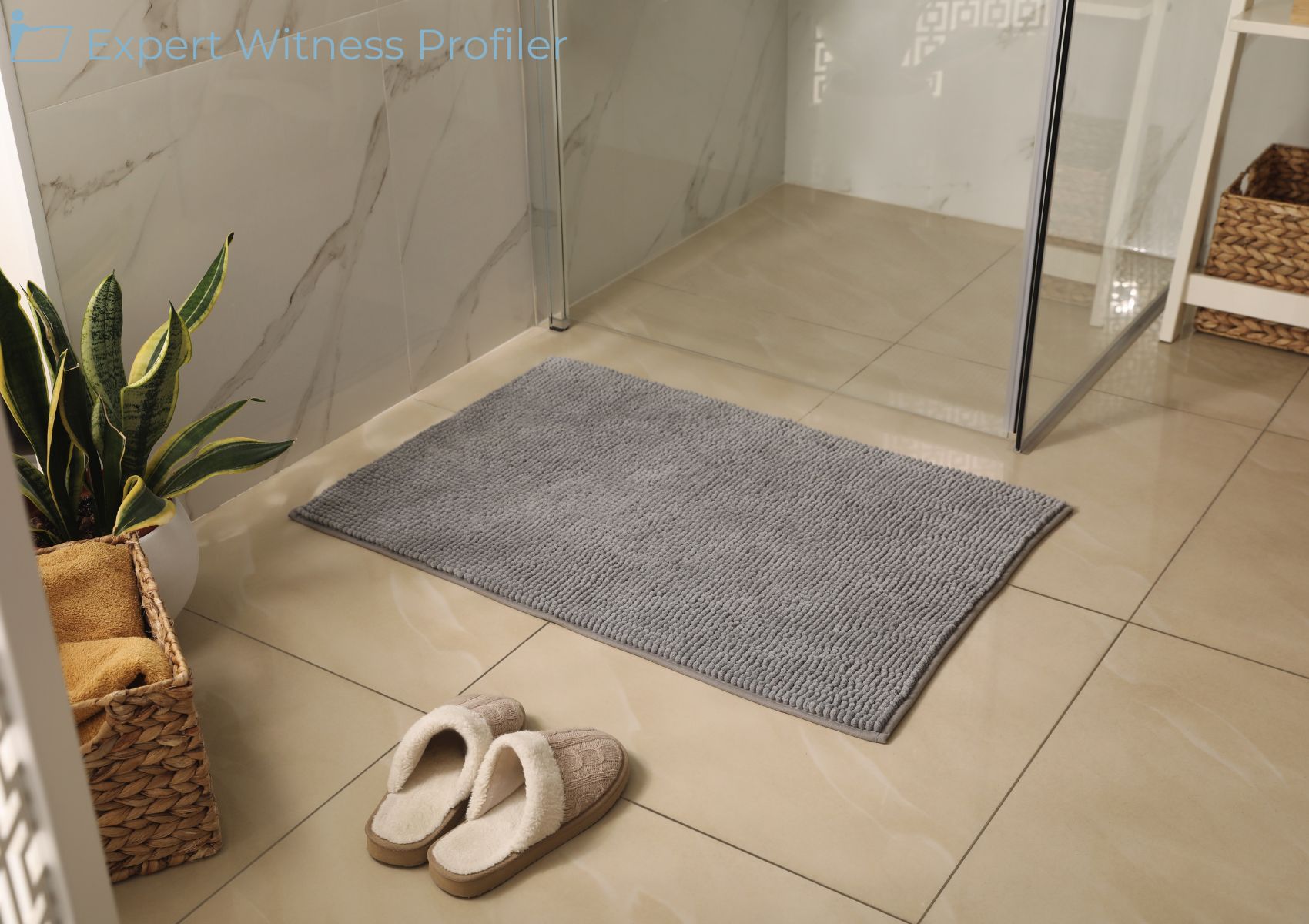Economics Expert Witness’ Testimony Based on Well-Tested Methods for Establishing Classwide Damages Admitted
Posted on April 22, 2024 by Expert Witness Profiler
A district judge in California refused to exclude the testimony of an expert economist despite objections raised against his methods for establishing classwide damages. The expert economist had adequately explained why his damages analysis would provide an accurate and common method to prove classwide damages.
The Plaintiff contended that the Defendant Williams-Sonoma, Inc., and its advertising and marketing subsidiaries Williams-Sonoma DTC, Inc., and Williams-Sonoma Advertising, Inc. (collectively “WSI”) advertises and markets the thread count in certain of its Bedding Products in a way that is not only contrary to industry-accepted standards, but is also false, deceptive, or misleading to reasonable consumers.
On September 28, 2022, Perlin filed a Motion for Class Certification (“Certification Motion”) seeking to certify two classes: (1) a nationwide class of persons that purchased one of the seven lines of bedding seeking injunctive relief under the UCL, FAL, and CLRA pursuant to Rule 23(b)(2); and (2) a California subclass of persons that purchased one of the Bedding Products from WSI seeking monetary (and all other available) relief under the UCL, FAL, CLRA, and common unjust enrichment under Rule 23(b)(3).
The Defendant opposed the motion for class certification and moved to exclude the testimony of Jennifer Frank Rhodes and Russell L. Lamb, pursuant to Federal Rule of Evidence 702.

Textiles Expert Witness
Jennifer Frank Rhodes is the owner of Twin Gingers LLC, a consulting company serving the textile and consumer products industries specializing in the design, development and commercialization of textiles and textile consumer products, particularly bedding products. She is also employed at Thomas Jefferson University, as the Assistant Program Director, Textile Design B.S. Program and an Adjunct Professor. Rhodes has studied textile design and textile product development for more than 25 years and has worked in this field for more than 20 years.
Economics Expert Witness
Dr. Russell L. Lamb is the President and Co-Founder of Monument Economics Group. An expert in antitrust economics and applied econometrics, Lamb has more than 25 years experience as an economic consultant and more than a dozen years’ experience developing econometric models and providing expert witness and economic consulting services in cases involving antitrust, class action, and liability and damages analysis.
Having taught economics for many years at both the undergraduate and graduate levels, Lamb specializes in explaining complex economic and econometric concepts in a clear and concise manner to non-economists, including the Courts.
Prior to his work as an expert witness, Lamb developed extensive particular expertise in international and domestic agricultural economics and has undertaken extensive original research and econometric analysis related to markets for agricultural commodities. He has authored more than 50 articles in peer-reviewed journals, trade press, and major newspapers. Lamb also regularly presents at conferences on topics including the state of the U.S. Economy and farm policy.
Discussion by the Court
Jennifer Frank Rhodes
Rhodes opined that the generally accepted method for calculating thread count for bedding products sold to consumers in the United States is to count the number of warp yarns (ends) and filling, or weft yarns, (picks) in an inch. Each yarn, or thread, is counted as one thread, even if it is two-ply. Accordingly, bedding that had 300 yarns per square inch had a thread count of 300, even if the thread is two-ply. ASTM (American Society for Testing and Materials) D3775-17 is the generally accepted industry standard for calculating thread count for woven cotton bedding products sold to consumers in the United States at all times during the proposed class period.
Her testing of the WSI seven lines of bedding revealed that WSI’s advertised thread counts are not accurate. The stated thread count of each collection is approximately double the actual thread count. Each of the collections are represented to be two-ply. Accordingly, WSI improperly counted each ply in the yarn to falsely inflate the thread count, contrary to the industry standard for calculating thread count. She concluded that the various products sold under a single line or collection of bedding, such as sheeting, cases, duvets, and shams, are made of the same fabric. She explained the practical process of thread count testing and concluded that thread count could not be done with the naked eye or by the average consumer.
Motion to exclude
WSI moved to exclude her opinions of “industry standard” and “generally accepted methods” of thread count because she referred only to “industry” insider expectations that WSI argued were irrelevant and because she testified that there were no mandated “labeling requirements” for thread count and the ASTM standard she relied on was not applicable to how textiles might be marketed. WSI also argued that because Rhodes was not a consumer perception expert, she could not testify to what consumers expected regarding thread count as that was outside her area of expertise. Finally, it challenged the reliability of her opinions regarding consumer perception of thread count, contending that she improperly relied on only “a handful of articles and non-binding legal opinions” to support her conclusions.
Court’s Ruling
The Court held that WSI equation of “industry standard” with irrelevant “insider knowledge” in this consumer case is not a reason to exclude Rhodes’ opinions. While she will need to explain how she connects the existence and use (or non-use) of industry standards to her opinions, including opinions on consumer perception and opinions on how others in the industry calculate thread count, she may opine on these issues given her work and teaching experience, as well as her reliance on industry publications and textbooks.
Considering Rhodes qualifications and given her experience in the industry, she is amply qualified to opine on the existence of industry standards and use or non-use of the ASTM standard.
Dr. Russell L. Lamb
The Plaintiffs retained Lamb to opine on whether the WSI’s “challenged conduct resulted in injury to all or nearly all proposed Class members, in that they paid higher prices for the Bedding Products they purchased from the Defendants; and whether the magnitude of damages can be calculated on a class wide basis without resorting to individualized inquiry.”
Lamb proposed the benchmark analysis to measure damages on a class-wide basis. A benchmark analysis is used to compare prices paid by customers for the Relevant Bedding Products with prices that customers paid for “benchmark” bedding products. Benchmark bedding products are products of comparison that resemble the Relevant Bedding Products but are not a part of the Challenged Conduct, i.e. bedding products with properly labeled thread counts that are materially the same as or very similar to the Relevant Bedding Products. The benchmark analysis can be done in two ways: through a direct benchmark approach or a hedonic pricing model.
He explained how he would construct and run both models to support his opinions, but did not — for class certification purposes — actually run both models.
Motion to exclude
WSI first moved to strike Lamb’s opinions that are based on the materiality of thread count to consumers. It argued that his opinions assume that thread count is material without adequate expertise and without a reliable basis, given that he relied only on “cherry-picked” industry and WSI documents as well as the challenged testimony of Rhodes, and not on empirical consumer evidence, such as a survey of actual consumers regarding WSI’s Bedding Products.
WSI next moved to exclude Lamb’s opinion that a “direct benchmark approach” can be used to determine class-wide damages, because in order to complete that benchmark analysis Lamb will rely on Rhodes’ selection of “benchmark products,” meaning products comparable to the Bedding Products at issue in this case but with “properly identified thread counts.” WSI argued that the benchmark products identified by Rhodes were not comparable to WSI’s Bedding Products in numerous ways.
They also moved to exclude Lamb’s second proposed method of showing classwide damages, his proposed hedonistic-regression model. WSI argued, first, that a hedonistic-regression model did not fit the contours of this case, offering testimony from two WSI declarants regarding “actual” WSI’s pricing practices. It argued that those declarants’ testimony demonstrate that even a reduction in demand (an assumption in the hedonic model) would not result in a lower price or vice versa in the real world because WSI sets prices at a fixed rate above the supplier’s price and does not price sheets according to demand. It asserted that Lamb’s hedonic regression model, as Lamb admits, would be “artificially constructed” and should be excluded.
Finally, WSI argued that because Lamb did not conduct his proposed hedonic-regression analysis or confirm that the data needed to run that analysis existed, his opinions regarding the hedonistic-regression model must be excluded as impermissibly vague and unreliable.
Court’s Ruling
The Court determined that how material thread count is to a reasonable consumer is, of course, subject to dispute by WSI and its experts. Whether the jury agrees that thread count is material has not yet been determined. But damages experts are allowed to assume the merits of a question in order to conduct their damages work, which is what Lamb did (although he did identify numerous sources supporting the materiality of thread count to consumers). That is particularly true here, where WSI successfully bifurcated damages discovery from class discovery and the Plaintiffs have not had the opportunity to fully engage in damages discovery.
The Court held that damages experts are not required to have run their damage analyses, but instead are required to explain how they would do so and why the resulting analysis would provide an accurate and common method to prove classwide damages at the class certification stage. Lamb has satisfied that burden here with respect to the benchmark analysis.
WSI ignored that hedonistic-regression models were based on real-world transactions and real-world data regarding price and other variables.
The Court held that Lamb’s opinions regarding the hedonistic-regression model sufficed for class certification purposes.
What the final hedonistic-regression model looks like, after damages discovery has been completed and Lamb has finalized the variables selected and run the analysis, can be tested pre-trial.
The Court granted the Plaintiffs’ motion to certify a class of California purchases but denied the Plaintiffs’ motion to certify a nationwide injunctive relief class.
Held
The Court denied the Defendant WSI’s motion to exclude the Plaintiffs’ experts Jennifer Frank Rhodes and Russell L. Lamb.
Key Takeaways:
- WSI’s position that industry standards were irrelevant to consumer perception may be argued to the jury and reraised post-trial if appropriate. The Court held that WSI’s challenge to Rhodes’ opinions based on a review of too few or “cherry-picked” industry or WSI documents were classic grounds for cross-examination, not exclusion. And it may raise “legal conclusion” objections in limine or during trial to her opinions regarding whether a product was “mislabeled” or is “misleading.”
- At the class certification stage, damages experts are not required to have run their damage analyses, but instead are required to explain how they would do so and why the resulting analysis would provide an accurate and common method to prove classwide damages. Lamb has satisfied that burden here with respect to the benchmark analysis.
Case Details:
| Case Caption: | Rushing V. Williams-Sonoma, Inc. Et Al |
| Docket Number: | 3:16cv1421 |
| Court: | United States District Court, California Northern |
| Order Date: | February 21, 2024 |





